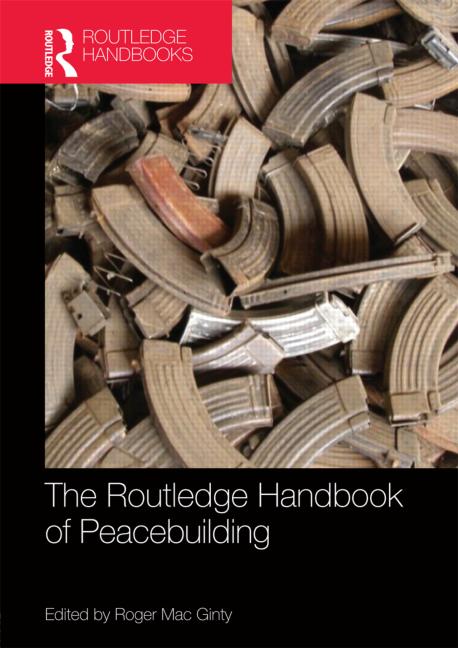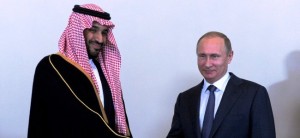
Policies, practices and debates about peacebuilding and how to approach the complexities of building peace have entered the mainstream of the debates on global security. A number of trends have contributed to this, including the evolution of armed conflicts worldwide, the emergence of concepts like human security and the responsibility to protect (R2P), and emerging norms and standards on human rights and international justice.
In the last decades, traditional UN peacekeeping operations based on consent and with limited mandates have been surpassed and sometimes complemented by new complex and multidimensional operations. A breadth of actors has contributed to the development of doctrines and political tools designed to address conflict management and complex transitions from war to peace. Policies and practices on the ground have evolved in parallel with increased intellectual engagement and academic and policy driven research about peacebuilding theory and practice.
The book edited by Roger Mac Ginty provides a comprehensive and multilayered analysis of the theory and practice of peacebuilding. This is not a handbook in the traditional sense of a manual providing tools and instructions on “how to do” it. Instead it is a detailed review of existing theoretical approaches to peacebuilding, to the historical development and actors involved in policies, and to the practical and ethical challenges of building peace. What it provides is a framework to understand how peacebuilding has evolved in theory and practice and what are the complexities of trying to intervene in conflicts.
The editor manages this ambitious objective by using his own expertise and putting together an impressive group of authors. The book is divided into six sections with 29 chapters. An introductory text by the editor sets the scene for an understanding of the structure and objectives of the whole volume. Then a ground-breaking Part I deals with the complex task of “Reading peacebuilding”. Its three chapters engage in critical examination and appraisal of the main theoretical approaches that guide peacebuilding, the historical evolution of this academic and policy field and the limits of peacebuilding theory. A number of cross-cutting themes that (should) inform peacebuilding are gathered in Part II, namely gender, religion, reconciliation and memory.
The contribution of social sciences to peacebuilding is the subject of Part III, which includes psychology, anthropology, sociology, history and economic sciences, as well as a significant approximation to quantitative approaches to peacebuilding. The contributions and limits of International Relations theory are also addressed. The insights about historical and current approaches allow the reader to get a useful overview of contributions, the limits of each discipline and how each of them can complement the others, in ways that go far beyond frequent (and sometimes empty) statements about the need of multidisciplinary approaches to peacebuilding.
Part IV addresses violence and security from a double perspective. Firstly it analyzes the evolving debates about global security and how ‘securitization’ discourses and practices have impacted peacebuilding. Secondly it addresses those dimensions of peacebuilding that have the strongest impacts in terms of building security on the ground: from disarmament, demobilization and reintegration of former combatants to security sector reform; and the debates about, and implications of, Law and human rights standards in peacebuilding contexts. Finally, Part V analyzes the impact of policies and practice on individuals, households and communities, and part VI examines the infrastructure of peacebuilding at different levels: international institutions and international aid for peace; national governments and debates about statebuilding; and the role of civil society and local communities.
One of the most remarkable features of this book is the attention provided to the “reading” of peacebuilding. The vast array of literature now available on this field includes theoretical analysis and policy prescriptions; evaluations, critical assessments and ‘lessons learned’; and a range of approaches to the concept of and the practice of building peace from the higher and macro levels of policy to the micro practices. The range of literature available is welcome but sometimes overwhelming. What this volume adds is an explicit orientation towards the understanding of theoretical and ideological underpinnings behind the analysis of peacebuilding, and how those ideas shape real practices.
Two broad schools of thought are identified and explained. The so-called ‘problem solving’ approach is mostly centered on how to make existing policies, tools and instruments work more effectively. This category includes academics (particularly in North America) and most policy makers and practitioners. Their theoretical assumptions accept the foundations of the current peacebuilding ‘system’ as basically correct, and understand practical shortcomings as caused by technical and solvable problems in terms of coordination, timing and financing, among others. On the other hand, the ‘critique’ school finds support in the UK and other parts of Europe and the global South and questions the underlying basis of dominant approaches. In this view, problems of peacebuilding policies and practice arise from the fact that they do not question fundamental power relations in a given society or the international system, and thus seek just superficial and short-term fixes that cannot provide long term and sustainable peace.
These broadly defined schools are very real and contribute to the shape of peacebuilding worldwide. But they present at least two problems. First, the theoretical underpinnings are rarely made explicit particularly in regard to the problem solving approach, and second, there is limited interaction between them, which the editor calls an “epistemological closure”. Both facts hamper efforts to grasp the complexities of this field and put in place more effective policies. The attempt to make theoretical approaches explicit is precisely one of the most remarkable aspects of this volume. The editor manages this aim by putting together: a) theoretical and practical chapters that address different peacebuilding approaches and b) an array of authors supportive of both schools. Each author addresses a particular issue or dimension of peacebuilding from the perspective of an advocate of a particular approach.
Another key aspect addressed here is the role of institutions and people in building peace. This broad issue affects a range of dichotomies, from statebuilding versus civil society; top-down versus bottom-up approaches; international or national preeminence, and the hybridized structures that result from those interactions. Tensions between institutionalisation and rights have permeated policies and interventions with very real consequences for people living in conflict and post-conflict settings. This book provides a deep understanding on how ‘hidden’ assumptions drive decisions about the international peacebuilding architecture, approaches to security, and the complexities of international aid for peace.
My only critique of the book is the lack of authors from the global South, particularly voices from emerging powers with a growing role in international peace and security. This is explicitly recognized by the editor, but the encyclopedic character of the volume would have made it an ideal place to provide room for Southern perspectives.
To sum up, this is a challenging and comprehensive review of peacebuilding theoretical approaches, policies and practices, and of the complexities of the field itself. It is highly recommendable for all those interested in historical trends and current debates. One could assume that most scholars are aware of the theoretical and practical debates, but a number of policy-makers and practitioners could benefit from exposure to a wider understanding of the complex realities they aim to engage with.
The Routledge Handbook of Peacebuilding fills a gap in the literature and achieves excellence in highlighting a number of considerations of key importance for international peace and security. An updated and impressively wide bibliography only adds to this recommendation.
Published in Journal of Conflict Transformation and Security (JCTS) Vol. 4 | No. 1-2



